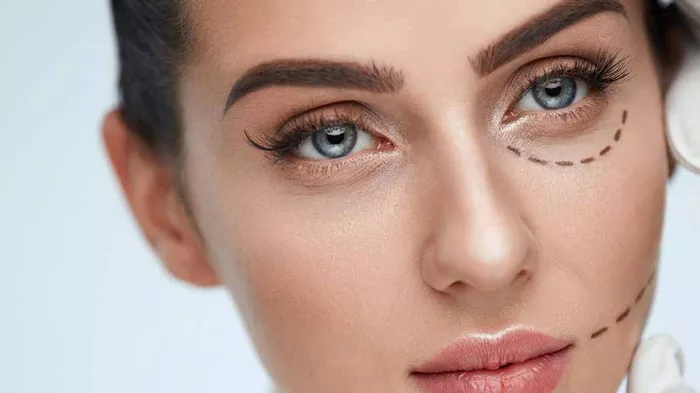Sagging eye bags can be a common concern, causing individuals to seek solutions to prevent or reduce their appearance. Understanding the underlying causes and implementing preventive measures can help maintain a youthful and vibrant eye area. This article aims to provide comprehensive insights into preventing sagging eye bags through lifestyle changes, skincare practices, and medical treatments.
Understanding the Causes of Sagging Eye Bags
Sagging eye bags can be attributed to various factors, including age-related changes, genetics, lifestyle choices, and medical conditions. As we age, the skin around the eyes loses elasticity and collagen, leading to sagging and puffiness. Additionally, genetics play a significant role, as some individuals may be predisposed to developing prominent eye bags. Lifestyle factors such as lack of sleep, dehydration, smoking, alcohol consumption, and sun exposure can exacerbate the problem. Certain medical conditions, such as allergies, thyroid disorders, and fluid retention, can also contribute to sagging eye bags.
Implementing Lifestyle Changes
Making lifestyle changes is a crucial step in preventing sagging eye bags. Adequate sleep is essential for skin rejuvenation and minimizing puffiness around the eyes. Aim for 7-9 hours of quality sleep each night to support overall skin health. Staying hydrated by drinking plenty of water helps maintain skin elasticity and reduces the appearance of under-eye bags. Avoiding smoking and excessive alcohol consumption can prevent premature aging and skin damage, including sagging eye bags. Additionally, protecting the delicate skin around the eyes from sun exposure by wearing sunglasses and applying sunscreen can prevent collagen breakdown and sagging.
Adopting a Skincare Routine
A consistent skincare routine tailored to the needs of the eye area can help prevent sagging eye bags. Gentle cleansing and moisturizing are essential steps to keep the skin hydrated and supple. Incorporating eye creams or serums containing ingredients like retinol, vitamin C, hyaluronic acid, and peptides can promote collagen production, improve skin elasticity, and reduce the appearance of fine lines and wrinkles. Applying cold compresses or chilled cucumber slices can temporarily constrict blood vessels and reduce puffiness around the eyes.
Exploring Medical Treatments
In some cases, lifestyle changes and skincare routines may not provide the desired results in preventing sagging eye bags. In such instances, medical treatments may be considered to address the issue effectively. Dermal fillers can be injected to restore lost volume and smooth out hollows under the eyes, reducing the appearance of sagging. Surgical procedures such as blepharoplasty, or eyelid surgery, can remove excess skin and fat deposits, resulting in a rejuvenated eye area. Laser treatments and chemical peels may also be recommended to tighten and resurface the skin around the eyes.
Conclusion
Preventing sagging eye bags requires a holistic approach that addresses underlying causes through lifestyle modifications, skincare practices, and medical interventions. By understanding the factors contributing to sagging eye bags and implementing preventive measures early on, individuals can maintain a youthful and refreshed appearance around the eyes. Consulting with a dermatologist or skincare specialist can provide personalized recommendations and treatments tailored to individual needs, ensuring optimal results in preventing sagging eye bags.
By covering these key points, this article aims to provide comprehensive insights into preventing sagging eye bags and empowering readers to make informed decisions about their skincare and treatment options.
FAQs
What causes saggy eye bags?
Saggy eye bags can be caused by various factors, including aging, genetics, fluid retention, allergies, sun exposure, and lifestyle habits such as smoking, alcohol consumption, and poor sleep quality. As we age, the skin around the eyes loses elasticity and collagen, leading to sagging and puffiness.
How can I lift my eye bags naturally?
There are several natural remedies and lifestyle changes that may help reduce the appearance of saggy eye bags. These include getting enough sleep, staying hydrated, applying cold compresses or cucumber slices, using tea bags, practicing facial exercises, avoiding allergens, maintaining a healthy diet rich in antioxidants, and using skincare products containing ingredients like caffeine, retinol, and vitamin C.
Can eye bags go away?
In some cases, mild eye bags caused by temporary factors such as lack of sleep or fluid retention may improve with lifestyle changes and home remedies. However, chronic or severe eye bags caused by aging or genetics may require medical or cosmetic interventions such as surgery or fillers to address effectively.
What causes saggy eyes?
Saggy eyes, or ptosis, can be caused by various factors, including aging, genetics, weakened eyelid muscles, nerve damage, trauma, medical conditions such as thyroid disorders or neurological conditions, and certain medications. Ptosis may lead to drooping of the upper eyelids, giving the appearance of saggy eyes.


